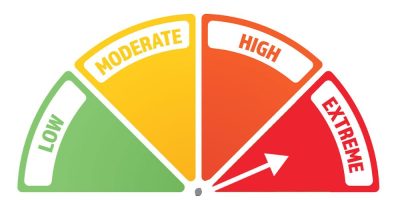
As parts of southern Ontario, including Barrie and Simcoe County, will be hit by heavy winds and blowing snow this week, Environment and Climate Change Canada is warning residents in a new way.
On Thursday, the department instituted a new, Alert Colour Matrix to help Canadians "understand what weather will do in addition to what it will be."
“We continue to experience more frequent and extreme weather in Canada, which makes it more important than ever for Canadians to have access to clear, accurate, and easy-to-understand weather alerts," Minister of Environment and Climate Change Julie Dabrusin said in a release.
"By improving how severe weather is reported, we are helping Canadians better understand and prepare for potential impacts, so they can make informed decisions about how and when to protect themselves, their loved ones, and their property."
Barrie's News Delivered To Your Inbox
By submitting this form, you are consenting to receive marketing emails from: Central Ontario Broadcasting, 431 Huronia Rd, Barrie, Ontario, CA, https://www.cobroadcasting.com. You can revoke your consent to receive emails at any time by using the SafeUnsubscribe® link, found at the bottom of every email. Emails are serviced by Constant Contact
While weather advisories, watches, and warnings still exist within the system along with special weather statements, they'll each includes a colour (yellow, orange, or red) to illustrate the seriousness of the forecast. That means there could be yellow watches or yellow warnings, for example.
Simply, the department wants residents to know the risk by associating it with the colour of the alert. The system sets out describe the impact the weather event will have on people, property, and communities.
“Canadians everywhere need timely, reliable alerts and the knowledge to act when hurricanes, wildfires, or other climate-related emergencies threaten their community," Minister of Emergency Management and Community Resilience Eleanor Olszewski said in a release. "By strengthening our national weather alert program, we are making sure people get clear information they can count on so they can prepare, adapt, and stay safe in the face of any weather event.”
Environment Canada adds the new system is part of the ongoing modernization of its public weather program and aligns with practices promoted by the World Meteorological Organization.
WHAT THE COLOURS MEAN
YELLOW
Yellow alerts are the most common, as the impacts of the weather are moderate, localized, and short-term. They are issued when hazardous weather may cause damage, disruption, or health impacts.
An example of a yellow warning alert would be something that could cause short-term utility outages or the risk of larger tree branches being broken. That could be for a thunderstorm or high winds.
ORANGE
While more uncommon, orange alerts are more unsettling, as associated weather could cause significant damage, disruption, or health impacts. Impacts are much more widespread and could last a few days.
Barrie was issued an orange warning on Thursday morning regarding a forecast of hazardous snow squalls expected from the evening into Saturday.
Total snowfall amounts of 30 to 50 centimetres are possible under this particular warning, along with high winds and blowing snow. Environment Canada is advising that travel will likely be extremely hazardous and road closures, disruptions to transportation, services, and utilities are possible.
RED
Red alerts come along very seldom, and can be described as events with extensive, widespread, and prolonged impacts. The department says those weather events are very dangerous, possibly life-threatening, and will cause extreme damage and disruption.
The ice storm that hit a large portion of southern Ontario, including Barrie and Simcoe County in the spring of 2025 is an example of a weather event that would garner a red alert.
The department says it will launch a series of initiatives over the next year to improve severe weather alerts, add more context to daily forecasts and expected impacts, and extend the outlook for possible extreme weather.
—Stay up to date with all local weather watches, warnings, and advisories with Barrie360's weather and storm watch page.





